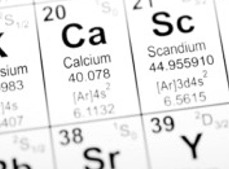Calcium (Ca)
 Strictly speaking calcium is a secondary macronutrient but is essential for plants and has an important role in maintaining soil health and fertility.
Strictly speaking calcium is a secondary macronutrient but is essential for plants and has an important role in maintaining soil health and fertility.
Plants need a continual supply of calcium because, once fixed, it becomes immobile in plant tissues and the only source of supply to new tissues is via xylem sap. Unlike other mineral nutrients, calcium cannot be re-mobilised from older plant tissues. It is found principally in cell wall structures and needs to be plant available within a distinct ratio to magnesium.
Calcium lime is the commonest way to raise soil pH. Magnesian lime, as the name suggests, is about one third magnesium and two thirds calcium and should only be applied to soils with a known magnesium deficiency. Gypsum (calcium sulphate) is a good way to restore soil structure to high magnesium soils without affecting the pH. This "floculates" the soil making it crumbly and restoring pore space for the passage of air and water.
Calcium deficiency in plants mostly occurs on light, sandy, acidic soils. These are the most likely candidates for liming, which solves the calcium problem, raises the pH and facilitates better plant uptake of micronutrients (trace elements).
